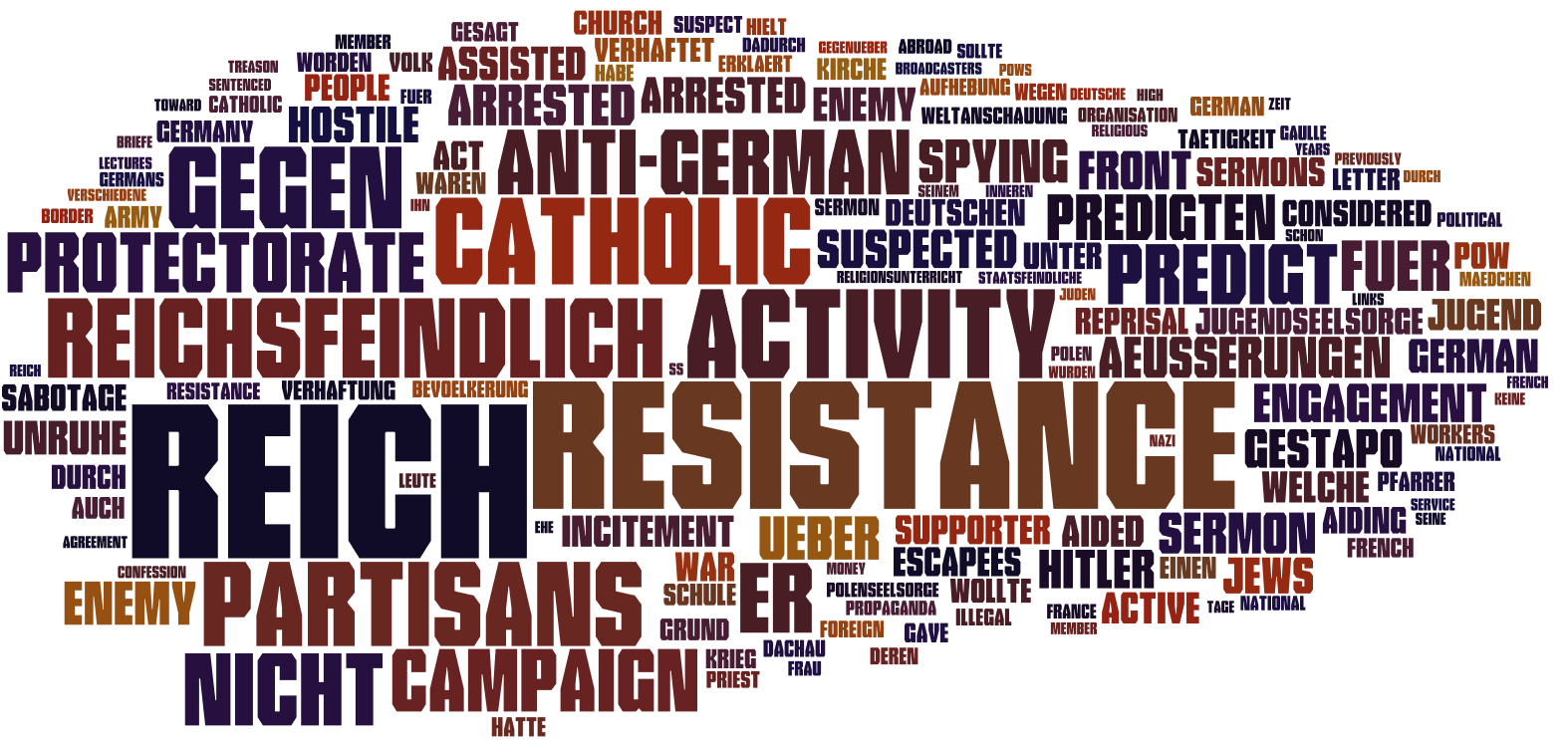Abstract & Historical Context
On March 22, 1933, the Nazis established Dachau Concentration Camp, located less than 15 miles from Munich, Germany, as a camp for political prisoners. Although the first prisoners were social democrats and German communists, the camp grew to hold a wider group of political dissenters, as well as other non-political prisoners, including a large Jewish population [1]. One block of Dachau Concentration Camp was devoted specifically to clergy who had been incarcerated for engaging in actions considered to be anti-Nazi. From as early as 1935 to as late as December, 1944, the Nazis sent the clergy to Dachau. These clergymen held different religious positions, were of different backgrounds and ages, and were made prisoners for varying reasons.
Although Holocaust research is oftentimes limited by the survival of wartime documents, much information about the clergy sent to Dachau Concentration Camp has survived in the form of individual testimonies of survivors and in the form of archival data, as evidenced by my datasets. This collective information can be explored to learn more about the clergy who were sent to Dachau Concentration Camp. Indeed, research efforts involving digital history have been undertaken in relation to a wide array of topics related to the Holocaust, a number of which can be found at the page Holocaust Research in the Context of Digital History. However, none to my knowledge have used a digital history approach to studying the clergy who were sent to Dachau Concentration Camp. Accordingly, the primary objective of this project is to use tools from digital history, including quantitative data analysis and interactive visualizations, to give a new perspective to 2679 of the 2720 total clergy incarcerated at Dachau Concentration Camp.
As a brief introduction to this topic and this project, I have made the above interactive map of clergy incarcerated at Dachau Concentration Camp. The map displays Dachau Concentration Camp, marked by the red dot, in relation to the other concentration camps. Each blue dot represents the location of a German diocese; clicking on the blue dot displays biographical information for a select number of clergy who were from the specific diocese and were incarcerated at Dachau. The biographical information for each clergyman includes birthdate, reason for arrest, and a short biography; this biographical information serves to demonstrate the diversity of those incarcerated at Dachau Concentration Camp. I recommend using the map in Fullscreen Mode.
For those who wish to jump immediately to more visualizations, please refer to the Presentation of Results section.
1 Distel, Barbara, and others, eds. The Dachau Concentration Camp, 1933 to 1945. 3rd ed. Munich: Comite International de Dachau, 2005.
